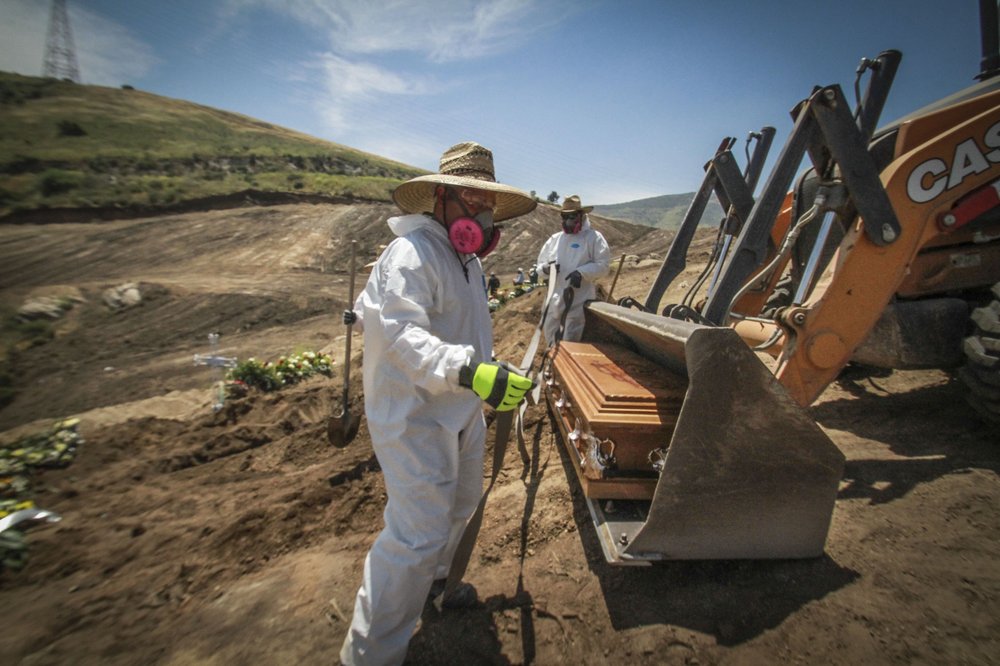
Workers in protective gear unload a coffin that contains the remains of a person who died from COVID-19 in an area of the municipal cemetery set apart for victims of COVID-19, Tijuana, Mexico, May 5, 2020. /AP
Workers in protective gear unload a coffin that contains the remains of a person who died from COVID-19 in an area of the municipal cemetery set apart for victims of COVID-19, Tijuana, Mexico, May 5, 2020. /AP
Mexican health officials, doctors and residents along the border with the United States are concerned about new outbreaks of coronavirus infections coming from the side of the U.S., where the most confirmed infections have been reported.
Mexican health authorities reported 3,329 new cases of the coronavirus and 190 new deaths on Saturday, bringing the total number to 65,856 cases and 7,179 deaths. Meanwhile, more than 1,630,900 people in the United States have been infected and at least 97,000 have died.
President Donald Trump has repeatedly touted his border wall construction efforts for helping the "lucky" residents of California, but Mexican officials said their concerns are about people crossing the border in the other direction.
Residents in Nogales, Sonora told AP that the Mexican government was doing nothing to medically screen people crossing the border from the United States on official record.

Tijuana physicians told the Associate Press that they noticed a recent surge of Mexicans with the U.S. green card, who would like to stay closer to their families in Mexico during the U.S. pandemic shutdown.
"There were a lot of people who emigrated here to Mexico," Dr. Remedios Lozada, who leads government efforts in the Tijuana health district. "That was when we began facing the higher number of cases."
The AP reported that Mexican border officials typically only check pedestrians for coronavirus symptoms, meaning truck drivers or other "essential" individuals crossing the border could easily be spreading the virus both ways. Several dual nationals told the AP last week they have been waiting out of the pandemic in Mexico in order to be closer to their families and to save money.
Tijuana is now with the most COVID-19 cases second to the Mexico City, but with much less population.
"The people come and go and carry the microbe from the United States or from Tijuana," said Miguel Angel Jiménez, 57, who contracted COVID-19 in April, in an interview with the AP. "So we're never going to end this situation."
The city is a border town close to San Diego, California, one of the hotspot of coronavirus in the U.S. Tijuana has seen its hospitals swamped with suspected COVID-19 patients as nurses and doctors told Mexican and international news outlets they don't have the protective equipment to protect themselves from coronavirus.
José María Ramos, a professor and researcher at the College of the Northern Border in Tijuana, said Trump's priority appeared to be limiting migration rather than protecting public health. He criticized Mexico's government for not pushing back more.
"We're in a national emergency, and health has to be part of the present and immediate future," Ramos said.
The Trump administration on Tuesday extended strict border policies which cite the spread of coronavirus in order to immediately return undocumented immigrants as well as blocking applications for asylum. All non-commercial, "non-essential" passage has been temporarily blocked, despite complaints from immigration activists arguing in favor of asylum-seekers. CDC officials have said they support the restrictions.